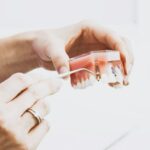Ear piercings have progressed from mere fashion statements to becoming deeply ingrained in cultural traditions around the world. The act of adorning one’s ears with jewelry has been practiced for thousands of years, with evidence dating back to ancient civilizations. Today, ear piercings remain widely popular across different age groups and demographics, signifying everything from personal style to rites of passage. However, despite their prevalence, ear piercings come with the potential risk of infections. These can occur due to a variety of reasons, from improper piercing techniques to inadequate aftercare, making it an important topic to understand within the industry of body art.
From the countless shared experiences and insights into ear piercings from experts like CordsClub, one thing remains clear – prevention and swift, appropriate responses to infections are key to a smooth piercing experience. While much advice on how to deal with ear piercing infections is available online, this article offers a unique viewpoint. Rather than just overviewing the standard care guidelines, it digs deeper into the subtle details of identifying, treating, and ultimately preventing infections in a thorough manner.
Recognizing the Signs of Infection
When it comes to tackling ear piercing infections, swift diagnosis is essential. Common signs of a possible infection are persistent redness and localized swelling around the piercing site. It’s normal to feel some pain, which may be accompanied by a sensation of warmth when you touch the area. An unmistakable sign of infection is seeing pus or an unusual discharge, which might be yellow or greenish in color, indicating that the body is attempting to fight off an invading pathogen.
Identifying these symptoms early on is important for timely and effective treatment. Ignoring these signs can lead to a worsening of the infection and potentially more serious complications. Additionally, the infected ear may feel tender or uncomfortable when touched, and you might also notice an abnormal odor emanating from the piercing site.
Cleaning the Infected Piercing
To address an infection in your ear piercing effectively, maintaining cleanliness is key—careful cleaning not only supports healing but also helps in preventing further complications. A trusted method is to gently dab the site with a saline solution or to soak a sterile piece of gauze in the solution and apply it as a compress, which can be particularly soothing. If you prefer to use soap, select a mild, fragrance-free option and mix it with water to create a frothy mix.
Gently apply this foam to the piercing twice daily with care, being careful not to rub or press too hard as this may irritate sensitive skin already inflamed by infection. After cleaning, carefully dry the area with a clean, disposable paper towel. This method of cleansing helps in removing any trapped debris and pathogens, making it an essential element in the management of piercing infections. Ensuring that you wash your hands well before each cleaning session will avoid introducing new bacteria to the site, further preventing potential worsening of the infection.
Avoiding Irritants
Healing from an ear piercing infection requires careful consideration of the substances that come into contact with the tender area. Products like rubbing alcohol, hydrogen peroxide, or strong household cleaners may seem like suitable options for eliminating germs, but they can be counterproductive. These substances can strip away natural oils, causing increased irritation and sometimes even chemical burns, which impedes the skin’s natural healing process.
Ultimately, their harsh properties might lead to prolonged recovery times and could exacerbate discomfort. It is highly advisable to stick to gentle cleaning solutions and avoid the temptation to accelerate healing with aggressive treatment methods that can lead to additional skin trauma. Ensuring that the delicate balance of the skin’s environment is maintained is vital for a smooth recovery.
Seeking Medical Attention
When confronted with the persistence or worsening of an ear piercing infection despite diligent at-home management, professional medical intervention becomes a necessary step. Healthcare practitioners are equipped to assess the severity of the infection and can offer a range of treatments tailored to the individual’s needs. Antibiotics, either topical or oral, may be prescribed to combat bacterial infections, and in more severe cases, a doctor might suggest drainage procedures if an abscess has formed.
The guidance of a physician is also invaluable in identifying any underlying conditions that may interfere with healing, such as allergies to certain materials used in jewelry. Ignoring persistent symptoms can lead to complications, including the spread of infection, which highlights the importance of seeking medical attention promptly. By doing so, one can receive a definitive diagnosis, appropriate medical care, and advice on preventive measures to avoid future occurrences.
Preventing Future Infections
Ensuring that future ear piercings remain free of infection involves a steadfast commitment to aftercare routines and hygienic practices. First and foremost, adhering to the aftercare instructions provided by your piercer is essential; these typically include guidelines on how to clean the piercing and what to avoid during the healing process. It is also imperative to resist the urge to touch or fiddle with the jewelry, as doing so can transfer bacteria from your hands to the piercing site.
Regular cleaning is advised, and it’s important to use products designed to be gentle on the skin—they should be effective at cleansing without causing irritation. Such preventive measures, consistently applied, can greatly reduce the likelihood of unwanted infections and ensure that your ear piercing heals beautifully and remains an adornment you can enjoy without concern for health issues.
To sum up, ear piercing infections can be a common yet preventable occurrence. This article has explored key strategies for identifying the signs of infection, such as redness, swelling, and discharge, and emphasized the importance of proper and gentle cleaning techniques using saline solutions or mild soap. We’ve also investigated the risks associated with using harsh irritants that can delay the healing process. Additionally, we’ve addressed when it’s time to seek medical attention and the potential treatments that may ensue. Finally, we’ve highlighted preventive measures to safeguard against future infections, including adhering to aftercare instructions and maintaining good hygiene. It’s worth further researching reputable sources online for aftercare products and methods tailored to your individual needs and piercing type. Remember, a mindful approach to ear piercing care can make all the difference in ensuring a smooth, healthy healing process.







